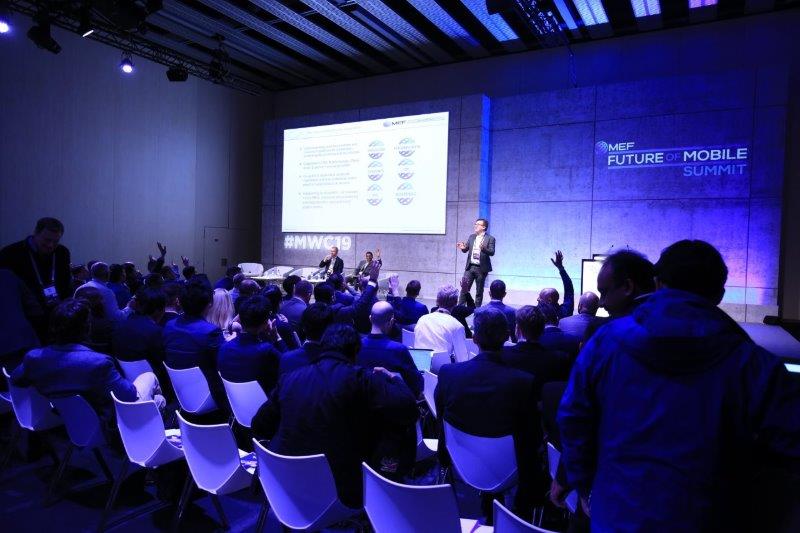MEF’s Riccardo Amati reports Cisco posted strong Q4 results with $2B in AI orders, surpassing targets as demand from cloud providers and carriers grows. Revenue hit $14.7B, driven by AI-ready networking gear. While 2026 guidance stays cautious amid competition, Cisco’s upgrades and partnerships position it to shape AI-enhanced 5G, 6G, and edge networks globally.
AI infrastructure demand from cloud providers lifts revenue above estimates, with new high-speed networking gear and global partnerships set to shape next-gen mobile and edge networks, even as growth projections remain measured.
Cisco Systems is emerging as one of the quiet heavyweights in the race to build the next generation of AI-ready infrastructure, reporting over $2 billion in AI-related orders for fiscal 2025 — more than twice its original target. The networking giant’s fiscal fourth-quarter revenue rose 8% year over year, fueled by more than $800 million in AI infrastructure orders in just the last three months.
While the surge signals growing demand from hyperscale cloud providers and carriers preparing for AI-driven workloads, Cisco struck a cautious tone for fiscal 2026, projecting revenue between $59 billion and $60 billion — in line with Wall Street expectations, but short of the most bullish forecasts. For the mobile ecosystem, which is increasingly dependent on high-speed, low-latency, AI-enabled networks, Cisco’s product upgrades and global partnerships could accelerate the evolution toward smarter, more adaptive 5G, 6G, and edge networks.
AI is no longer an experimental overlay — it is becoming the default mode of operation for next-generation networks.“
Revenue Lift from AI, Guidance Signals Caution
The AI infrastructure orders we’ve received from webscale customers indicate a massive opportunity ahead as we lead the required architectural shift and build the critical infrastructure needed for the AI era,” CEO Chuck Robbins told analysts on the earnings call.
For the quarter ending July 26, Cisco delivered $14.7 billion in revenue, topping consensus estimates of $14.6 billion. Adjusted earnings per share came in at $0.99, a penny above expectations, while net income climbed to $2.82 billion from $2.16 billion a year earlier. Networking sales surged 12% to $7.63 billion, while security revenue rose 9% to $1.95 billion.
Cisco guided first-quarter fiscal 2026 revenue to $14.65 billion–$14.85 billion, modestly ahead of analyst estimates, and projected full-year adjusted EPS of $4.00–$4.06. The company’s AI business now represents about $1 billion in recognized revenue for fiscal 2025, with much of it tied to back-end networking systems connecting GPU clusters — a critical enabler for both training and inference phases of AI. The AI sales pipeline with enterprises is already in the hundreds of millions of dollars, suggesting demand is broadening beyond webscale hyperscalers to mobile operators and enterprise customers building AI-enhanced networks.
Two large webscale customers each placed total orders exceeding $1 billion during fiscal 2025, a sign that Cisco’s role in high-volume AI infrastructure projects is solidifying. AI orders from large cloud providers hit $800 million in the fourth quarter, up from $600 million in Q3. Yet management is tempering expectations, citing competitive pressure from Broadcom, Hewlett Packard Enterprise (which recently acquired Juniper Networks), and a complex global trade environment. CFO Mark Patterson noted that Cisco’s revenue guidance assumes current tariffs remain through 2026, adding, “We will continue to leverage our world-class supply-chain team to help mitigate the impact of tariffs where appropriate.”
Strategy: Speed, Security, and Simplification
Cisco’s AI ambitions hinge on upgrading its networking and security portfolio to meet the throughput, latency, and scalability demands of AI-era applications — requirements that also mirror the challenges facing mobile operators. The company is rolling out a new generation of switches offering tenfold performance improvements to eliminate data-transfer bottlenecks, a pressing issue for AI model training and real-time inference. It has also completed a two-year overhaul of its firewall lineup and is integrating product management into its Cisco Cloud Control platform, reducing operational fragmentation for customers.
“AI is going to be network-bound, both on training and inference,” said Jeetu Patel, Cisco’s President and Chief Product Officer. “Having processors sit idle during training because of slow networks is just throwing away money.”
This product consolidation is designed to make AI deployments more seamless — a selling point for mobile network operators juggling a mix of legacy and next-gen systems. Over the past year, Cisco reduced 15 separate management consoles for security products to a single interface, and plans to fold in networking gear management as well. For telcos and large enterprises, that means unified visibility across physical and virtual network layers, enabling faster troubleshooting and AI-driven optimization.
The strategy extends beyond hardware. Cisco has forged AI infrastructure partnerships in the Middle East, including with Saudi Arabia’s Humain and the UAE’s Stargate project, both expected to ramp in the second half of fiscal 2026. These data center initiatives, linked with OpenAI, SoftBank, and other technology partners, will serve as hubs for AI workloads that feed directly into mobile and edge computing ecosystems across the region.
Implications for the Mobile Ecosystem
For mobile operators, the significance of Cisco’s AI push is twofold: performance and adaptability. As AI workloads — from generative assistants to autonomous systems — move closer to the network edge, mobile infrastructure must handle exponentially higher data throughput with minimal latency. Cisco’s AI-optimized switches and integrated security could become core building blocks for networks that self-adjust in real time, allocating resources dynamically based on AI-driven predictions.
Moreover, the shift to AI-ready networks could redefine the economics of mobile infrastructure investment. Instead of building for peak traffic scenarios, operators could leverage AI to continuously fine-tune network performance, lowering costs while delivering higher-quality service. For 5G densification projects and early 6G trials, the ability to transport massive volumes of data between edge nodes and centralized AI processing units will be crucial — an area where Cisco’s back-end networking systems are already being deployed.
Still, the cautious tone in Cisco’s fiscal 2026 guidance is a reminder that AI adoption curves in telecom are uneven. While hyperscalers and some greenfield 5G networks are moving aggressively, many incumbent operators face budget constraints, spectrum policy delays, and integration challenges. Competitors such as Broadcom and HPE/Juniper are also racing to position themselves as AI-networking leaders, intensifying the battle for mobile infrastructure market share.
If Cisco can execute on its technology roadmap while deepening relationships with carriers and regional cloud providers, it could emerge as a central enabler of AI-enhanced mobile networks worldwide. The lesson for the mobile ecosystem is clear: AI is no longer an experimental overlay — it is becoming the default mode of operation for next-generation networks. Those who fail to integrate AI into the fabric of their infrastructure risk being left behind in both performance and profitability.
Cisco Systems is a MEF member.
MEF Podcasts
For more discussion, interviews and insights subscribe to our three regular podcast channels
Listen Now…









